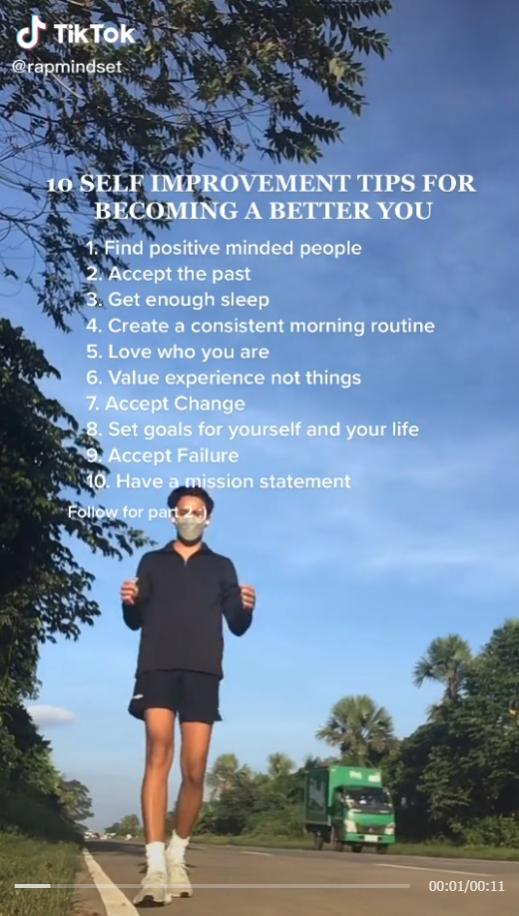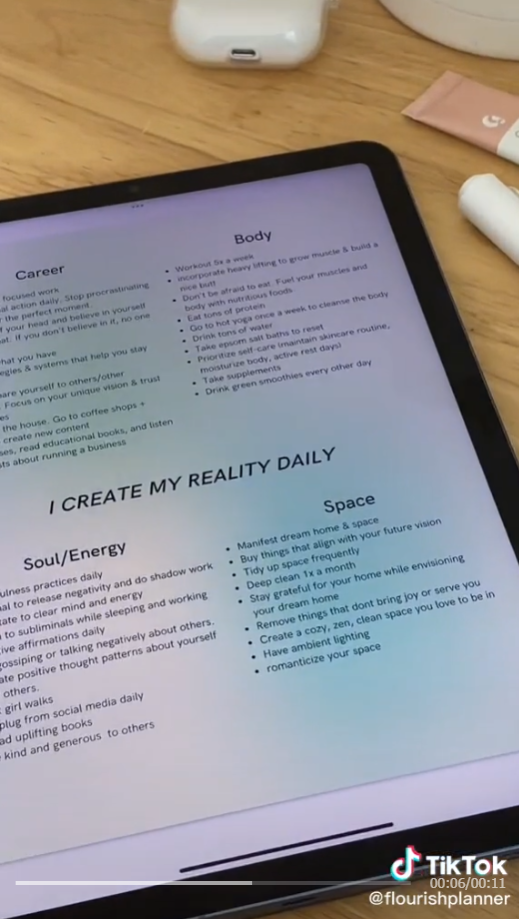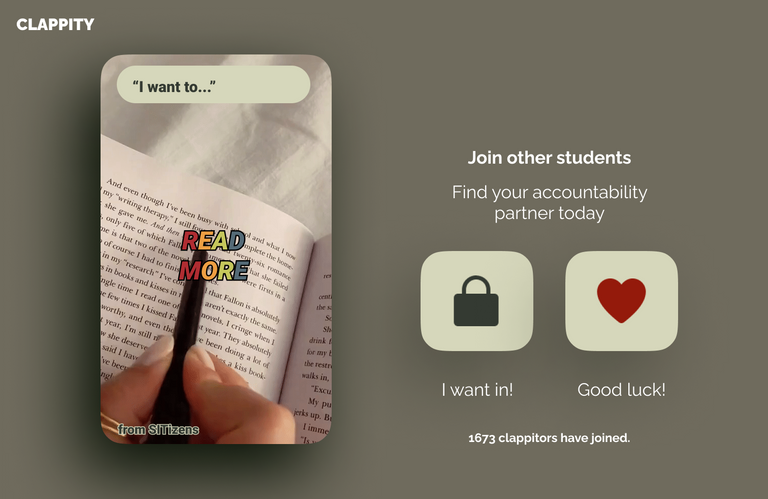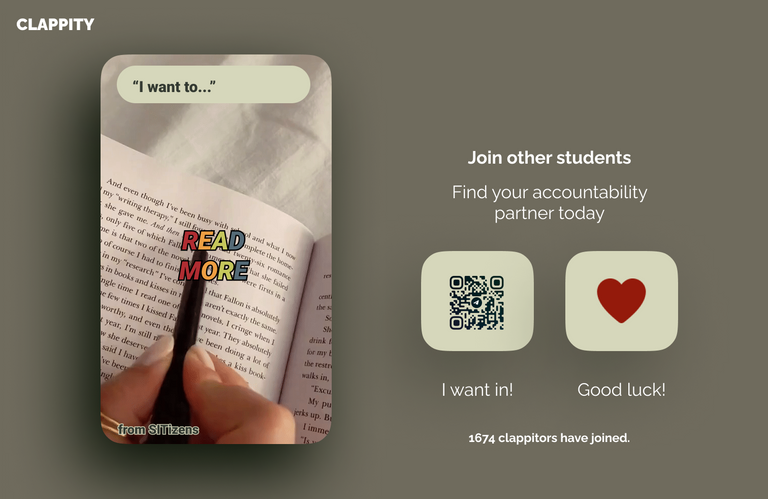
Clappity: a goal-setting chatbot for students 👏
How might we foster a sense of community in the SIT student body which is lacking from the decentralised campuses through the use of outdoor screens?
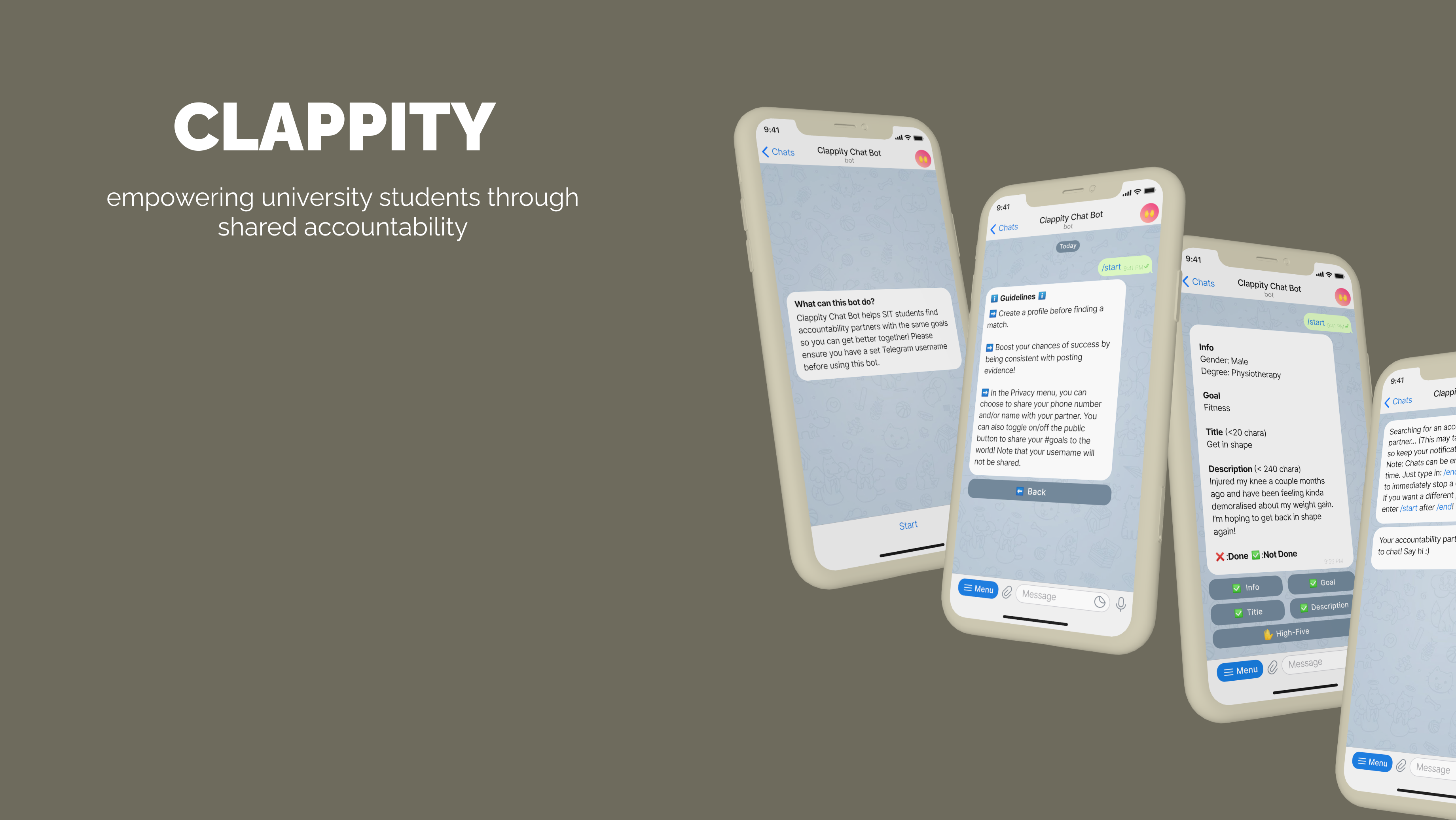
ROLE - Individual design project
TIMELINE - 3 Weeks
TOOLS - Figma
Project Overview
The "Beyond The Screen" hackathon held by Target Media Culcreative, Singapore Institute of Technology (SIT) and JTC Corporation called for ideas on employing the digital display network (DDP) to engage the student community of SIT who will be residing in the upcoming Punggol Digital District.
I created a Telegram bot that helps students find partners from school who will hold them accountable for fulfilling their personal goals.
User Research
Students care more about their personal development journey now than ever before.
Due to the pandemic, more have realised the dangers of "hustle culture" and are prioritising their well-being with the phenomenon known as "quiet quitting" even reaching the shores of universities.
With this focus on preserving mental health, TikTok—a platform abundantly used by university students—has seen a boom in the number of videos tagged "self-improvement" with students showing themselves performing non-academic related goals.
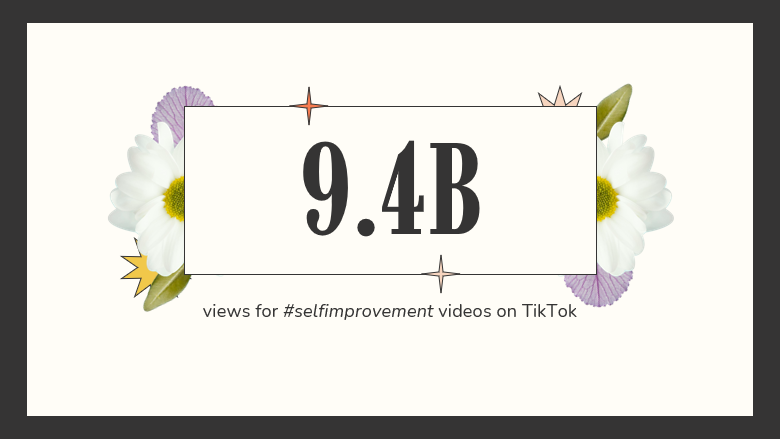
However, despite this focus on self-development and wellness among students, I found that they still faced issues in their self-development journey.
One of the most glaring problems was uncovered during a survey I conducted among SIT students about their habits surrounding goal-setting. I found that opinions were evenly split on how much difficulty was faced working on academic goals but there was a common consensus when it came to personal goals, with most stating they faced slight or much difficulty.

Therefore, this disconnect brought me to my problem statement...
University students' personal goals are not met as successfully as their academic goals.
Additionally, from interviews I conducted with several students about their habits surrounding goal setting and goal achievement, and perceptions of academic versus personal goals, I found further insights that can be synthesised into three main themes: process, motivations, and community.
These were some of the questions I asked:
- What's your process for starting a goal?
- What is the most difficult part about working on a goal?
- Is starting a task or keeping pace in a task more challenging for you?
- Share with me a typical week in your life when you decide to start a goal.

One common theme found across all interviewees as seen above was the lack of accountability. Students like surrounding themselves with other students who are also driven to fulfil their goals as they would care about their image if they fail. Compared to academic goals, personal goals are also solo endeavours which do not provide them with that sense of urgency to be as committed in their journey.
Additionally, secondary research on the psychology behind goal setting and goal fulfilment among university students supports this finding and reveals that this is because...
University students are more committed to their goals when they share them with someone whose opinions they value
Therefore, university students are more likely to fulfil their goals when others hold them accountable as they care about their image, with motivations falling when there isn't this accountability aspect.
Persona
The Goal-Oriented University Student
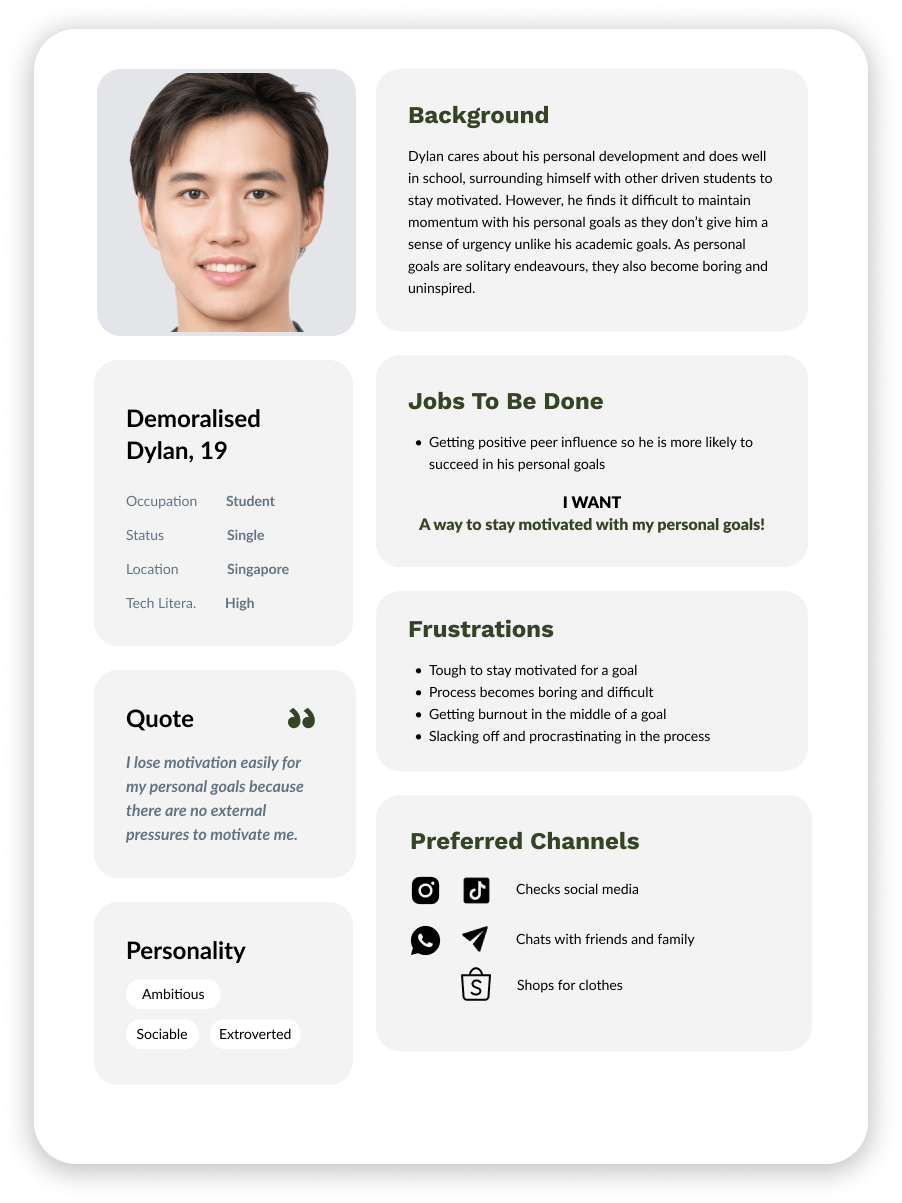
The goal-oriented university student, Dylan, wants to fulfil his personal goals but finds it harder to do so compared to his academic goals as there are no external pressures to motivate him. During his process of starting and fulfilling a goal, he usually goes through the following stages:
- Considering
- Attempting
- Bargaining
- Quitting
where he takes small steps to fulfil his goal but gets burnout as personal goals are solitary endeavours that get boring and uninspired which causes him to lose that sense of urgency. Finally, he gives up, telling himself he will try harder next time. Thus, he requires positive peer influence so he is more likely to succeed in his personal goals.
Low-Fi Wireframes User Testing
Originally, I had designed the chatbot as its own separate app. However, upon receiving user feedback that the concept was unappealing since it would require additional steps in downloading an app, I scrapped the whole idea and instead integrated it into the Telegram app which was already used by most university students. Additionally, as Telegram has a built-in chat feature, there would be lower barriers to adoption as users would have already formed familiarity with the app.
Clappity matches students with the same goals so they can get better together. Using the accountability mechanism, it encourages students to succeed in their personal development journey.
Figma file here.
Clappity will consist of three moving parts. First, the main mechanism (Clappity Chat Bot) allows them to chat with someone one-on-one over a period of time to work together and influence each other to accomplish their goals:
1. When the user presses the start button, they go through the verification process where they have to enter a code sent to their student email address.
2. They create a profile and choose the type of goal they are interested in (Fitness, Financial, Learning New Skills, Mental Health) along with the title and description of their goal.
3. When they are done, they click on "High-Five" and the bot will match them with an accountability partner. Users may quit the chat if they wish for a different partner.
4. Evidence of the progress of their goals can then be exchanged according to the terms of their arrangement.
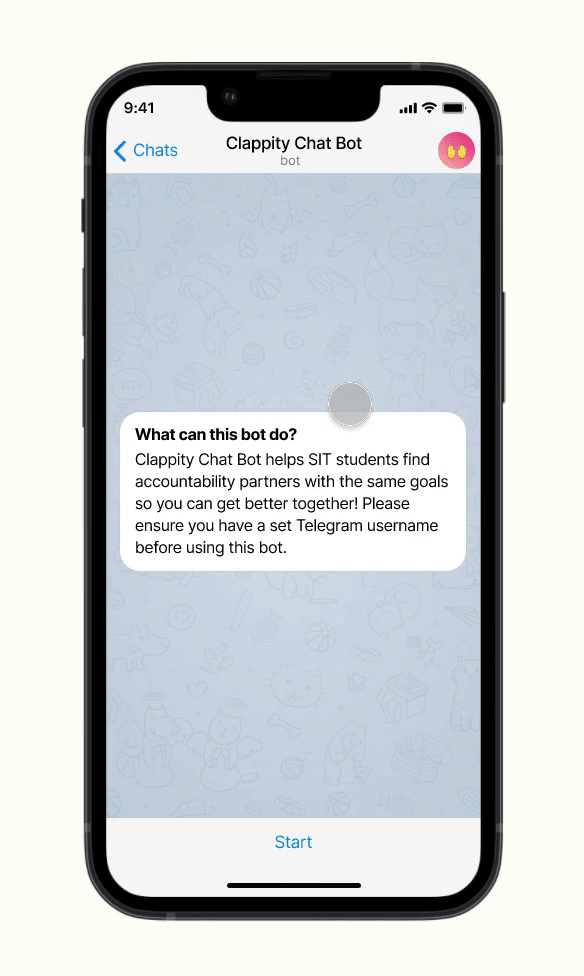
Second, a common administrative channel (Clappity) has the feature of integration with interactive digital displays situated near common areas at lift lobbies and canteens. By toggling on the public button, their goal will automatically be shared to this common chatroom to be broadcasted to the displays. Students who see this goal on the displays will be able to react to this goal by "hearting" it to show their encouragement. In "My Support", students will be able to see the number of hearts they have received. The channel will also be used by the admin to disseminate important information relating to this initiative.
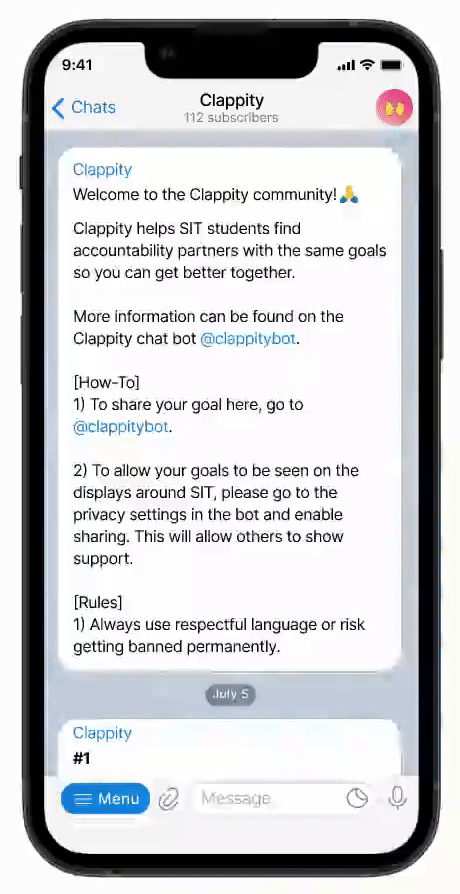
Third, Clappity will be promoted through the digital displays which will have a Call-To-Action on the last screen, encouraging students to join others to find their accountability partner. After pressing the lock icon, a QR code shows up that, when scanned, redirects students to the bot's sign-up page.
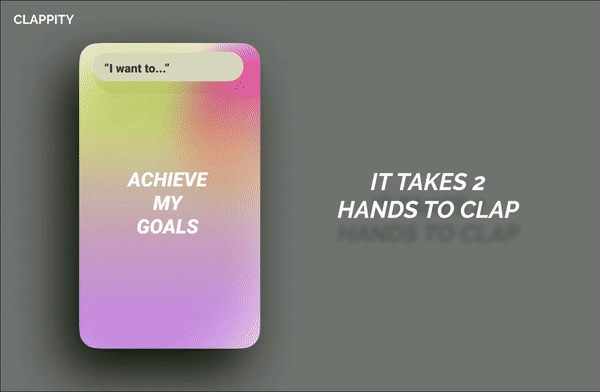
To enhance adoption, it may be promoted by SIT's own SITizen Ambassadors and the Student Management Committee. In the future, it could also serve other communities within the school like the faculty and staff.
Iterations
- Include sign-up counter
- Besides sharing users' goals, a counter can be included to increase sign-ups by showing real-time data on how many students are using the bot
- This utilises the homophily concept which refers to people gravitating towards like-minded individuals
Reflection
Clappity solves a pressing need in the community which is a sense of disconnect in the school identity among students. With enough people adopting this bot, it will cultivate the student life in SIT which is lacking currently because everyone is located on different campuses.
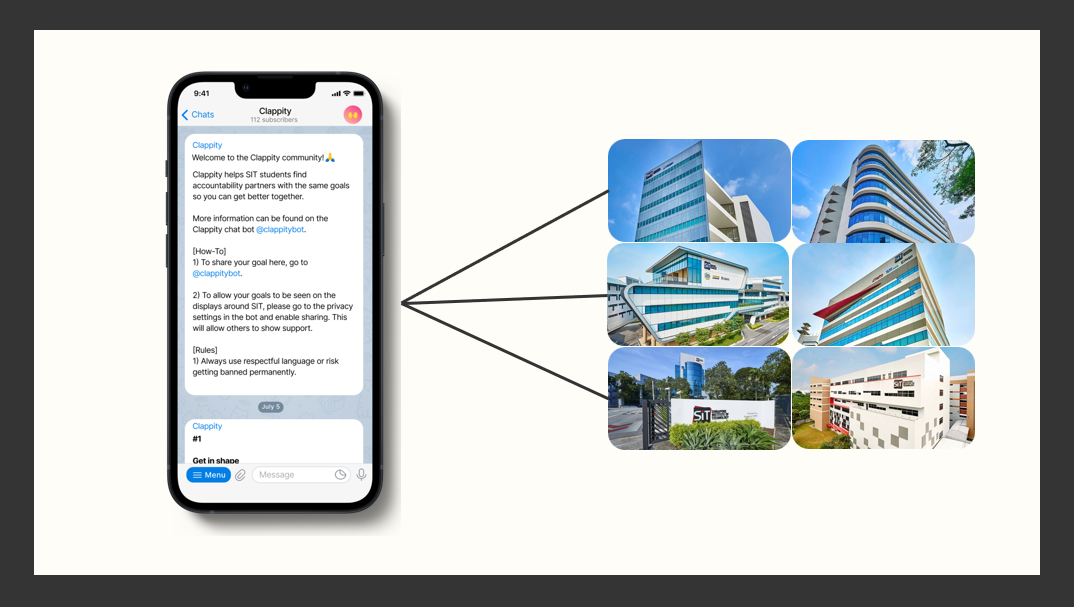
I enjoyed this project because I got to put user research tools into action such as interviewing and empathy mapping. Beyond the research aspect, I learnt to improve my pitching skills and how businesses put an idea into action. With the valuable feedback and lessons I got from the judges, I will strive to keep them in mind in future projects.
References
Klein, H. J., Lount, R. B., Park, H. M., & Linford, B. J. (2020). When goals are known: The effects of audience relative status on goal commitment and performance. Journal of Applied Psychology, 105(4), 372–389. https://doi.org/10.1037/apl0000441

